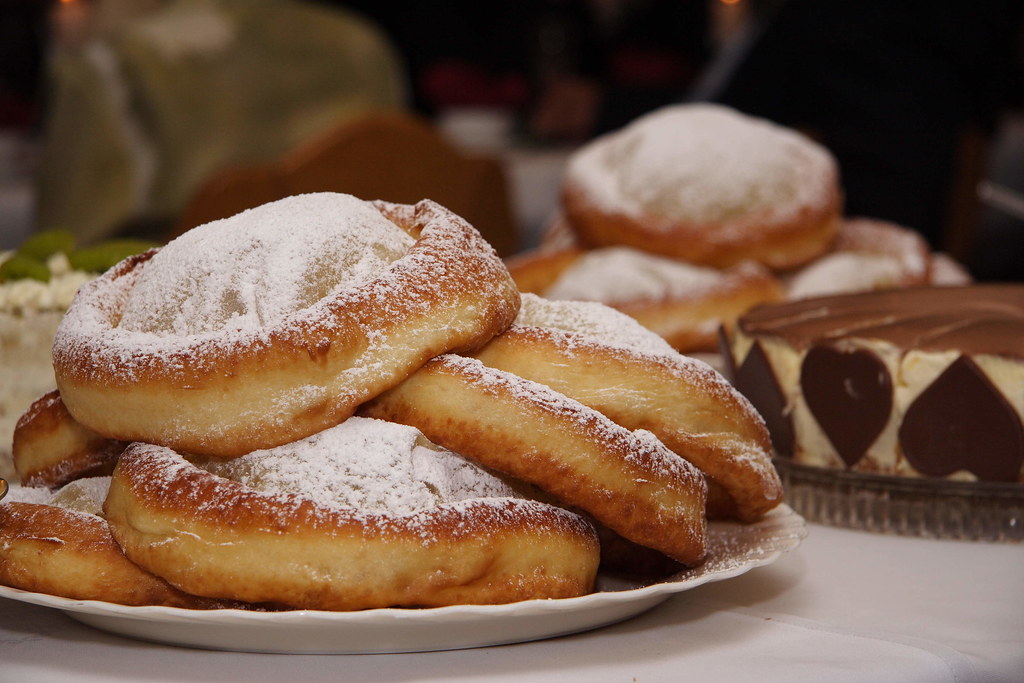
This years World Day of Bread on 16th October has been a complete success. Zorra of Kochtopf the creator of this blog event had to be really busy: check out her round-up of 184 entries with more than 200 bread recipes from 28 different countries!
And it looks like that this streak of bad bread baking luck has finally left me. Since then, I've been able to make the crusty bread rolls pictured above which was quite a miracle in itself. I started off with a recipe by Peter Reinhart and realized mid-way through that I didn't have certain ingredient. So I switched to a Rose Levy Beranbaum recipe - all the way ignoring the difference between dry active yeast (that's what I have at home) and instant yeast (that's what these guys are using). Luckily, I noticed it early enough and could adjust fermenting and rising times accordingly...
 For the ones who were interested in a traditional German-style cheese cake, I've finally managed to inquire about the recipe (after baking I had simply forgot to jot it down). Over the years, I've tried many a recipe for this kind of cake which is one of the most popular in Germany. I've also gotten very good results using a few tablespoons of semolina as a stabilizer but the following recipe is the favourite of my family.
For the ones who were interested in a traditional German-style cheese cake, I've finally managed to inquire about the recipe (after baking I had simply forgot to jot it down). Over the years, I've tried many a recipe for this kind of cake which is one of the most popular in Germany. I've also gotten very good results using a few tablespoons of semolina as a stabilizer but the following recipe is the favourite of my family.Usually, the recipe calls for rum-soaked raisins which also act as a stabilizer. However, this time we had run out of them - but I'm not fond of raisins anyway. That means, most of the time, two cakes have to be baked to make everyone happy..;-)
Shortcrust Pastry
The ingredients
150g butter, softened
100g sugar
pinch of salt
1 egg
1 sachet vanilla sugar (equals a heaped tablespoon)
1-2 tbsp rum
250g all-purpose flour
1/2 sachet baking powder (equals 7.5g)
1
Cream butter with both types of sugar and the salt until pale and fluffy.
2
Incorporate the egg and the rum, mixing thoroughly.
3
Add flour and baking powder mixing on low speed until it all comes together.
4
Take the dough out of the mixing bowl and briefly knead together. Shape into a ball, cover with foil and chill in the fridge until ready to use (at least 30 minutes).
The hint
This dough will be softer than shortcrust pastry that is made by cutting the butter into the flour. However, it should not be sticky. Don't add anymore flour otherwise you'll end up with concrete and not with a tender crust.
The filling
The ingredients
(suitable for a springform 28 centimetres in diameter)
60g butter, softened
200g sugar
2 sachets vanilla sugar
pinch of salt
4 eggs, separated
1 kg quark (can be substituted with ricotta)
50g all-purpose flour
1/2 sachet baking poweder (7.5g)
If using a springform of 26 centimetres, only change the following amounts:
50g butter
150g sugar
3 eggs, separated
1 sachet vanilla sugar
750g quark
(the amounts for flour and baking powder stay the same)
1
In a dry, fat-free bowl, beat the egg whites with the salt until stiff peaks form. Set aside.
2
In another big bowl, cream butter with both types of sugar.
3
Mix in egg yolks until thoroughly incorporated.
4
Mix in quark. To make sure that everything is evenly distributed, use a spatula to scrape down sides and bottom.
5
Scrape egg whites on top of quark mixture, sift flour and baking powder atop. Gently fold everything together.
6
Butter your preferred springform pan and line it with the shortcrust pastry. I usually don't roll it but rather tear off pieces and press them into the tin. I make the rim by rolling pastry into little rolls and pressing them onto the sides of the tin.
7
Pour in the filling and fan-bake at 150 degrees Celsius for up to an hour or until well-set. The crust should be golden-brown and the filling should be speckled with brownish dots.
The hint
After turning off the oven, let the cake rest in there for at least another hour. That way, the quark filling won't collapse as much.





















